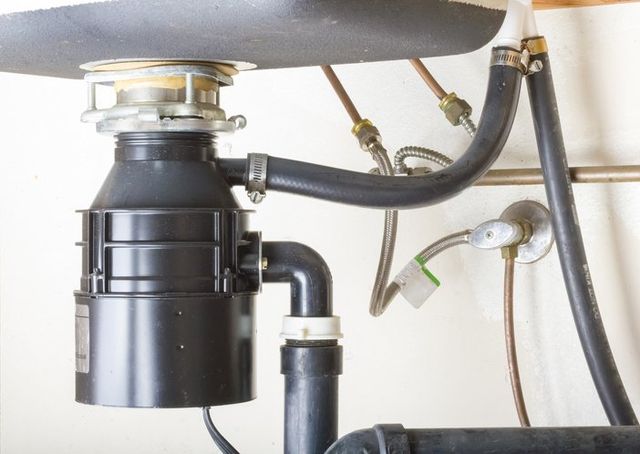They are making a number of good observations on the subject of The Handy Guide To Fixing Your Garbage Disposal Leaking in general in this post following next.

Garbage disposals are vital kitchen devices that assist in taking care of food waste effectively. However, a dripping garbage disposal can be an irritating and untidy problem to take care of. Thankfully, several leaks can be dealt with easily with a couple of simple steps. In this write-up, we will go over just how to fix a dripping waste disposal unit effectively.
Introduction
Waste disposal unit are mounted under kitchen sinks and are developed to shred food waste right into smaller items, enabling it to go through the plumbing system conveniently. While these devices are generally trusted, leaks can take place gradually due to damage, loose links, or damage to the system.
Step-by-Step Guide to Taking Care Of a Dripping Waste Disposal Unit
Switch off the Power
Prior to trying any repair services, make sure that the power to the waste disposal unit unit is turned off to stop the threat of electrical shock.
Locate the Leak
Identify the specific place of the leak and establish the cause
Tighten up Connections
Use a wrench to tighten any loose links between the disposal device and the plumbing system.
Change Seals or Gaskets
If the leak is because of used seals or gaskets, remove the old elements and change them with new ones.
Patching Fractures or Openings
For cracks or holes in the disposal system, usage epoxy or a suitable patching material to secure the broken location.
Identifying the Source of the Leak
Prior to trying to deal with a leaking garbage disposal, it is important to determine the resource of the leakage. This can typically be done through visual inspection or by performing basic tests.
Visual Examination
Check the garbage disposal device thoroughly for any kind of indications of water leak. Pay very close attention to locations around seals, gaskets, and connection factors.
Testing for Leakages
One means to evaluate for leakages is by running water through the disposal system and looking for any noticeable indicators of leakage.
Typical Sources Of Leaks in Garbage Disposals
Worn Seals and Gaskets
Seals and gaskets play a critical duty in preventing water from dripping out of the garbage disposal. Gradually, these components can wear away, leading to leaks around the disposal system.
Loose Connections
The links between the waste disposal unit and the plumbing system can become loose over time, causing water to leakage out throughout procedure.
Splits or Openings in the Disposal System
Physical damage to the garbage disposal, such as cracks or openings in the real estate, can likewise lead to leakages.
Devices and Materials Needed for Repairing a Dripping Waste Disposal Unit
Before beginning the repair procedure, gather the necessary devices and materials, consisting of a screwdriver, flexible wrench, plumbing technician's putty, replacement seals or gaskets, and epoxy or patching product for repairing splits or holes.
Examining the Garbage Disposal After Repair
When the repair is total, test the waste disposal unit by running water via it to guarantee that the leakage has been dealt with.
Preventive Upkeep Tips to Avoid Future Leaks
To avoid future leakages, it is necessary to do normal maintenance on your garbage disposal. This includes maintaining it tidy, staying clear of putting non-food items or difficult items down the disposal, and occasionally looking for leakages or various other issues.
Conclusion
In conclusion, repairing a leaking garbage disposal is a fairly simple process that can be completed with fundamental devices and materials. By adhering to the actions outlined in this post and practicing precautionary upkeep, you can keep your garbage disposal in good working problem and avoid expensive repair work in the future.
What to Do About a Leaking Garbage Disposal
A leaking garbage disposal often goes unnoticed until you confront a sopping cabinet, a foul-smelling puddle, or an audible drip-drip-drip from the unit. The fix can be frustrating, too, because the leak can stem from a number of components in the system. Fortunately, with a little sleuthing, you can zero in on the leak and—depending on the exact location—stop the icky oozing and repair the component that caused it. Worst case scenario, if it turns out that the garbage disposal must be replaced, installing a new one is a reasonable do-it-yourself task for those with basic plumbing skills. Read on to keep the cash you’d otherwise hand over to a pro.
Prepare to find the leak
Prior to testing the garbage disposal for leaks, unplug it at the wall outlet and turn off the power from the breaker box to prevent electrical shock. Then insert a watertight sink stopper into your sink drain and wipe the unit dry with a clean cloth. In any handy container, mix a few drops of food coloring into a few cups of water, and pour the dyed water onto the sink stopper to help you locate the leak.
Investigate the source
the top, where the disposal meets the sink drain the side, where the dishwasher hose or main drain pipe connects to the disposal or the bottom of the unit Inspect each of these locations while gliding a light-colored rag over the unit; the dyed water will readily show on the rag and reveal the location of the leak. If a leak isn’t immediately apparent, remove the sink stopper and pour a few more cups of dyed water down the sink drain, then check for leaks again. Leaks near the top of the unit are more likely to show themselves while the sink is plugged, while side and bottom leaks are more noticeable while the sink is unplugged.
The metal sink flange that sits directly inside the sink drain is typically sealed around the top with plumber’s putty (a clay-like sealant) and then secured from under the sink with bolts. If the plumber’s putty deteriorates, or the bolts loosen, the flange can no longer form a watertight seal between the sink drain and the disposal—which could cause a leak at the top of the unit.
To reseal the leaky flange, you must first detach the garbage disposal. Start by loosening the screws securing the main drain pipe to the disposal, then loosen the screws in the metal clamp securing the dishwasher hose to the disposal and detach the drain pipe and dishwasher hose from the disposal. Loosen the screws in the mounting ring that connects the disposal to the metal mounting assembly beneath the sink, then pull down the disposal and carefully set it on a clean, dry surface. Loosen the bolts in the mounting assembly with a wrench, then pull down the mounting assembly and set it near the disposal.

We are very drawn to The Handy Guide To Fixing Your Garbage Disposal Leaking and I really hope you enjoyed reading my entry. Do you know somebody else who is occupied with the niche? Please feel free to share it. Thank-you for going through it.
Here